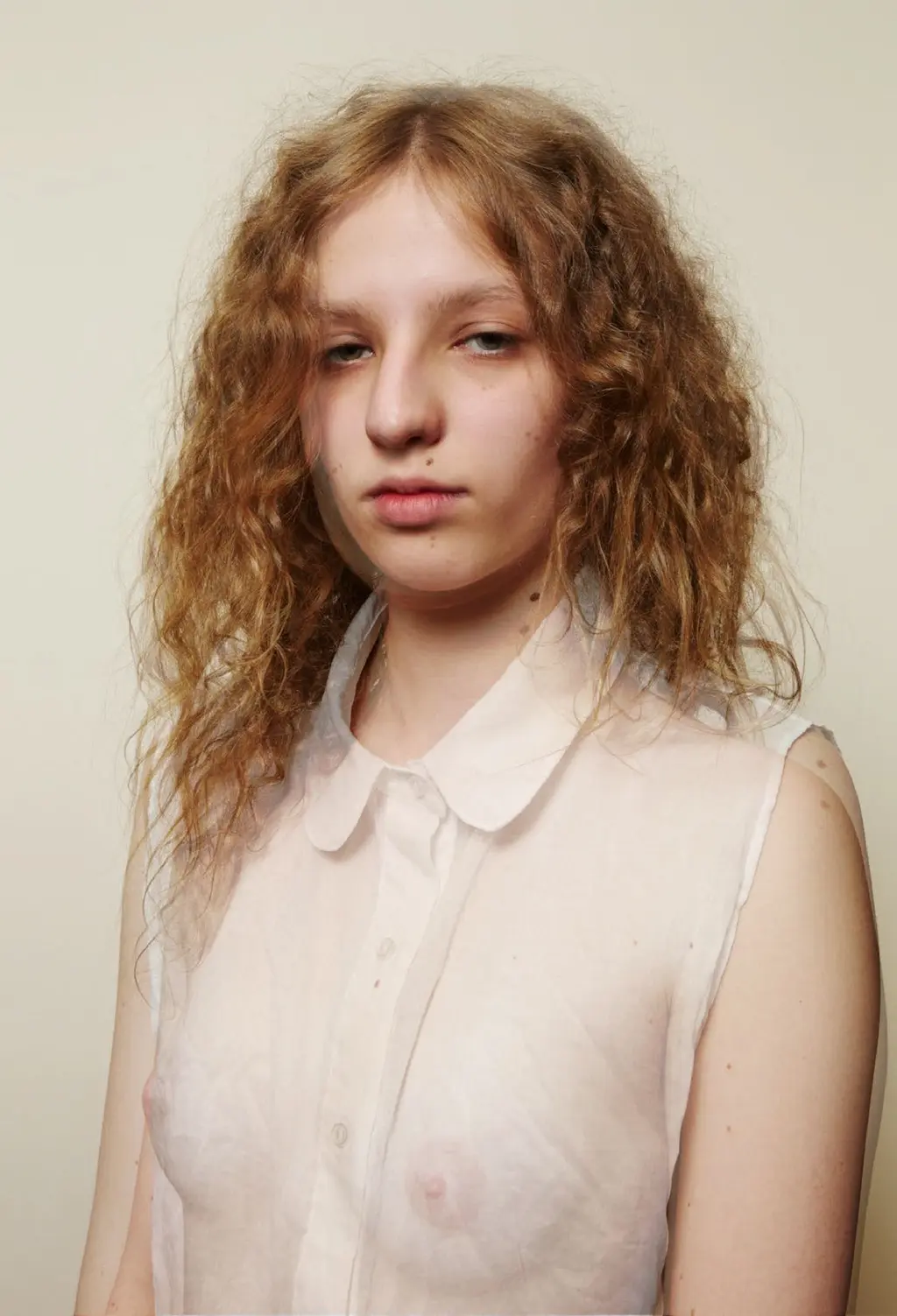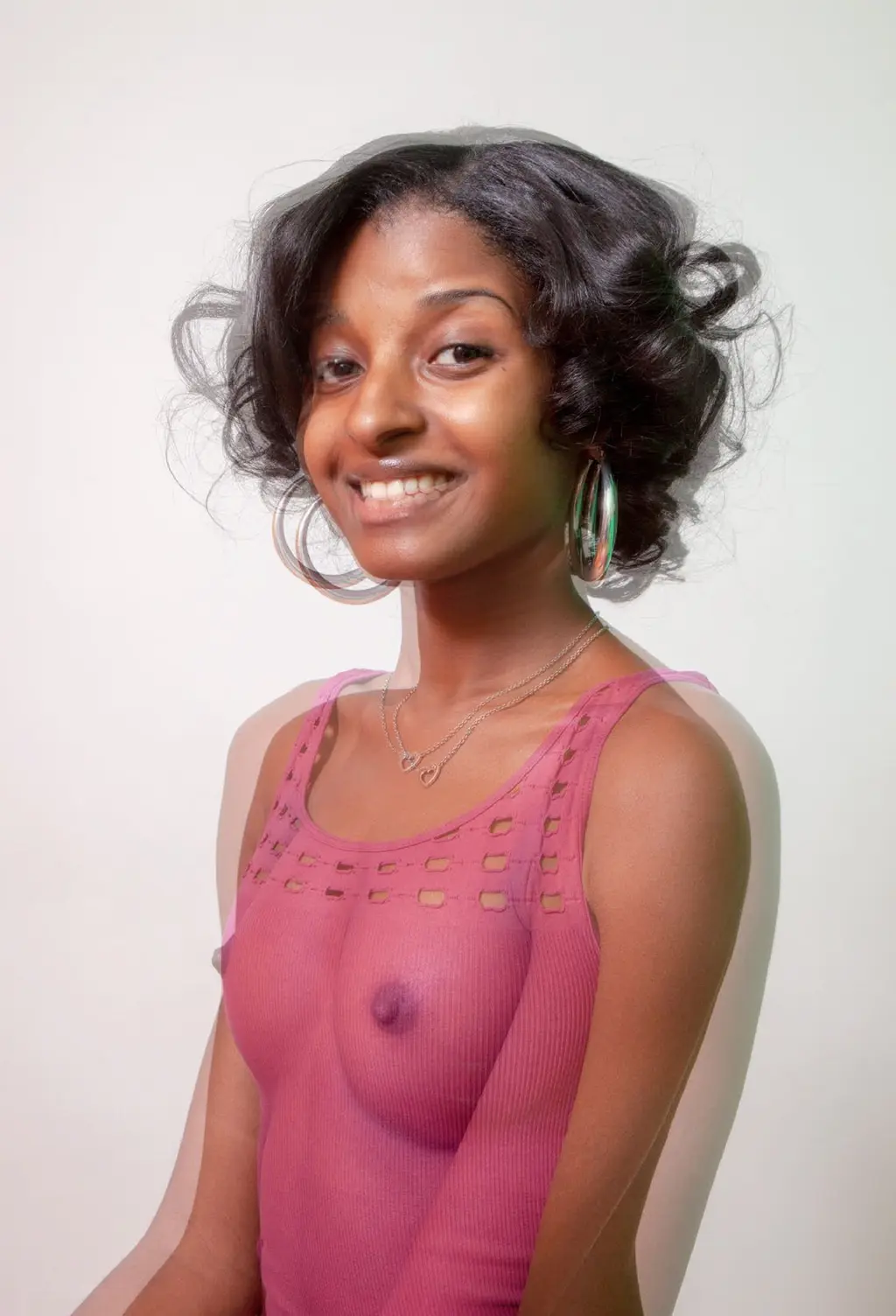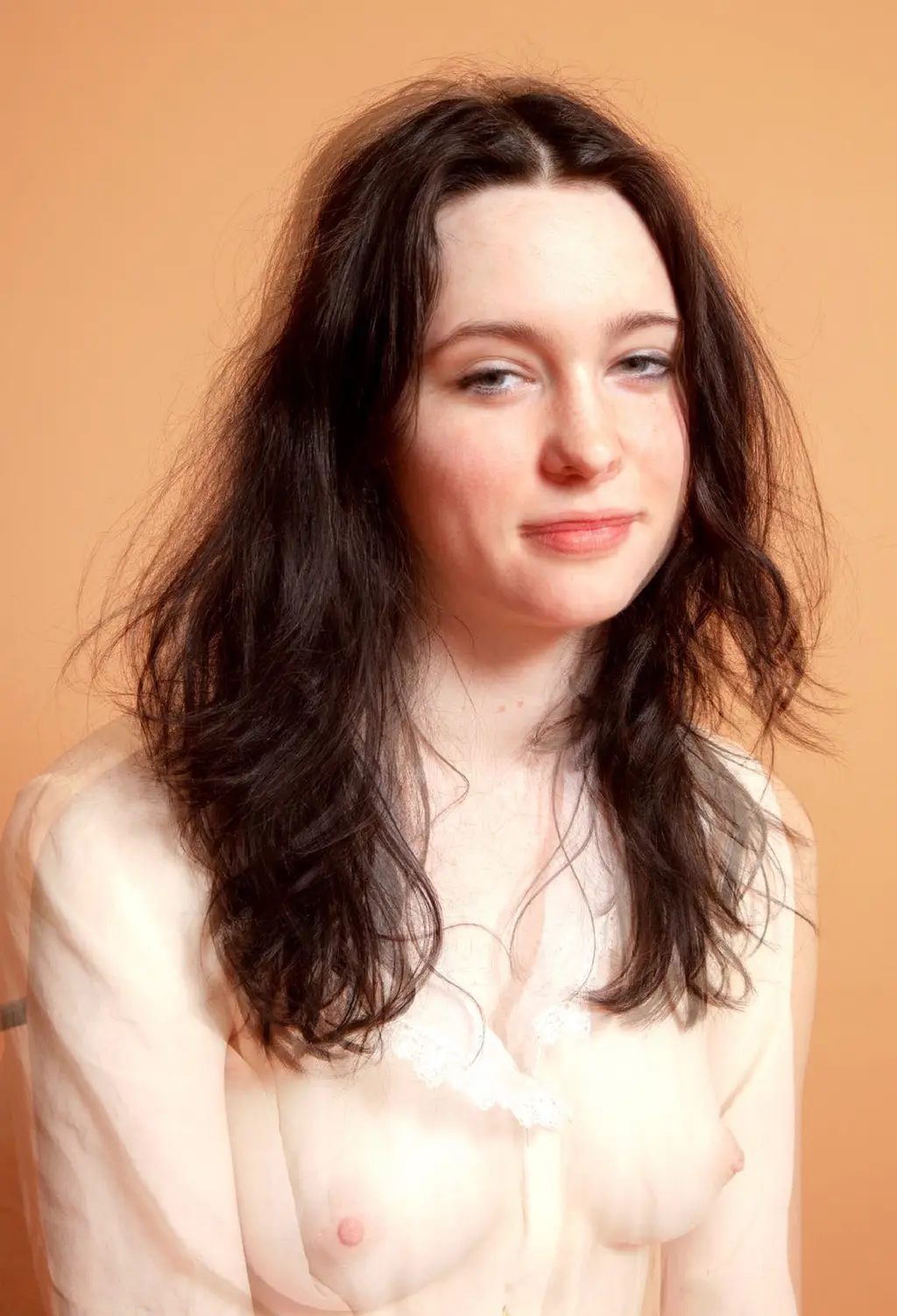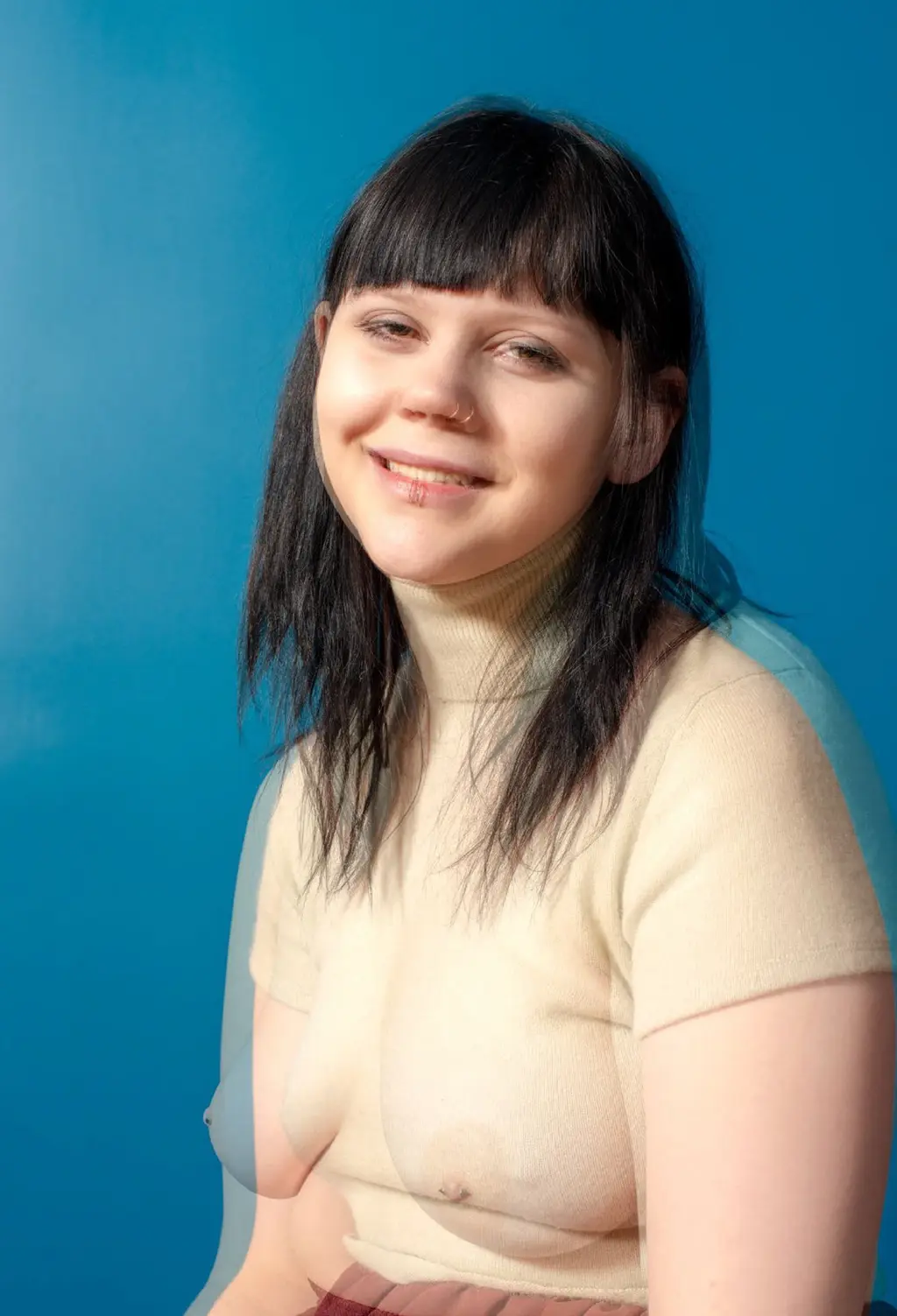Photographer Richard Kern on nudity, selfies and his 59 portraits of women

He’s been shockin’, repulsin’ and pissin’ people off since his late ’70s beginnings as a subversive filmmaker. Now he’s back with a new photo book, Baron.
Culture
Words: TJ Sidhu
Photography: Richard Kern
Richard Kern knows he’s pissing people off. At 66-years-old, the filmmaker turned photographer has just released his seventh instalment of Baron. Featuring 59 portraits of women, including photographer Petra Collins and actress Dasha Nekrasova, the photo series explores the dichotomy between girl and woman, nude and clothed, playful and deadly fucking serious.
The topless photos explore the power dynamic between the photographer (an old man) and the subject (a young woman), as well as the male gaze that comes with it. But also the subjects having total agency over their bodies.
“I was trying to make them look happy and optimistic,” Kern says. “They were based on school portraits, where everybody looks goofy or happy or whatever.”
But, being ever-so careful, he backtracks…
“I hesitate to say ‘school portraits’, because then it would be like ‘oh, they’re underage’, but they’re not underage – a lot of those women are actually in their thirties.”
Never one to tread the line carefully, he’s been making work that has angered, repulsed and pissed off people since the late ’70s. He’s a transgressive daddy, existing in a weird Venn diagram with anti-mainstream artists such as Larry Clark, Kembra Pfahler, Lydia Lunch and Cosey Fanni Tutti.
Belonging to the “Cinema of Transgression” – a term coined by filmmaker Nick Zedd in 1985 to band together likeminded artists providing shock value to screens – Kern’s films that came out of the decade, such as Fingered (1986), Manhattan Love Suicides (1985) and Submit To Me Now (1987) indulged in all sorts of gnarly shit, such as violence, hardcore sex and twisted storylines. Over the years that followed, he focused on photography, documenting the women of New York in 1995’s photo book New York Girls – a study of sex workers in the city with some photos deemed too explicit for publication in its initial release.
To coincide with the release of his most recent book, we probed him a little…


Hey Richard. How are you?
Good, I just woke up.
I was trying to explain your work to a friend who doesn’t know you. I think I said something like: “it’s funny, tragic, sexy, repulsive, pervy and beautiful.” How do you describe your work?
I just describe it as portraits, pretty much. I describe myself as a photographer, not an artist, if somebody asks me what I do.
So, Baron – your latest book. What do you think you captured in the women that you photographed?
Well, it’s a case-by-case thing, but I was trying to make them look happy and optimistic.
And they were based on that goofy style of school portraits. What was yours like?
I had a shag haircut in my [yearbook] and there’s a photo of me and my friends at the local ice cream parlour. We all decided to get stoned before it so we’re laughing uncontrollably.
Has selfie culture impacted your work?
Well, everyone knows what their angles are. When I shot people in the ’90s, the models were feeling it out just as I was because, in general, most of the models I work with are non-professional, and most of the time it’s their first time doing something like this. So it’s a huge, huge factor, and for me, social media… it’s good in a way. It makes me self-censor and reel it in a bit and keep it more cheerful and non-aggressive. A lot of the stuff I used to do would be comical and a little in your face. I mean, the films I did in the ’80s were really in your face.
“I wanted to make something that was creepy, and that’s been something that I’ve done from the very beginning, trying to make people uncomfortable”
RICHARD KERN
I’ve got to ask, what is it about the female form that has always interested you more than men?
I’m 66 now, and it’s tapered off a tiny bit, but there’s a desire that started from a very early age and always being a voyeur. I come from a time when if you could get your hands on a copy of Playboy, that was a humongous deal because you could see what a woman looked like naked. I don’t know how to describe it, but I have friends who are painters and they paint the things they can’t have. I was shooting a lot of men back in the ’90s, and I still do occasionally.
But not very much…
I said to my gallerist that maybe I should shoot more men because there’s definitely an audience. But he said, no, just keep shooting women because it really bothers people. He’s dead now, so I don’t know what he would say these days… Probably the same thing.
Does it bother you that it bothers people?
After all the social justice stuff and the backlash against men shooting women, you still see a lot of photography of men shooting women. But I’m an older man now, so naturally there’s a lot of backlash. There was always going to be a lot of backlash for this book, but the idea was to be creepy. I wanted to make something that was creepy, and that’s been something that I’ve done from the very beginning, trying to make people uncomfortable. But some people don’t even get to the uncomfortable part. With anything that has nudity in it, there’s firstly somebody that is either going to put up a wall because there’s nudity, or they’re not even going to see the nudity, they’ll just see the photographs. That has always been an issue with all the naked stuff I do. It’s also a cheap trick. In the old movies, I would use gore effects for cheap tricks… I’m just a cheap trickster.
So really, you’re just setting out to piss people off?
In my youth, I was a lot more aggressive. But I’m a lot older now and I’m not looking for aggression. If you put something on social media, there’s a lot of people who will like it, and then there are some people who hate it, and the people who hate it are the most vocal.


Do you think that’s a good thing, having that extreme polarising opinion?
Boy, I don’t know. I won’t know for about 50 years, I guess. If you look at the book New York Girls which is from 1995, I did that stuff to piss off the art community because I felt like I was so outside. I just couldn’t stand how the arts community, in general, was so conservative in spite of pretending to be liberal and progressive. I was trying to anger and confront them. It’s funny that 30 years later they’re in the Museum of Modern Art collection. How does that figure?
Wasn’t there an original interview by Kim Gordon in New York Girls?
Yeah, she did the original interview, but I don’t know if she would touch it these days. With that book in particular, there was a lot of negative response when it came out. But now it’s nostalgia, so the edge wears off over time. It becomes more acceptable. This book is going to look funny down the line. One thing about social media versus print is that with print, no one can comment. They have to go somewhere where there is something about it and then comment. It’s not like you post it on Instagram and you get attacked like crazy for something you post.
When you’re shooting naked women, are you always setting out to make a sexy image?
Well, I used to work for sex magazines…
With Dian Hanson?
Yeah! She would tell me over and over: “quit making this funny, it’s not funny, it’s supposed to be sexy.” I’ve used this quote a million times, but [someone from Taschen] said to me, “this is a masturbation piece, not a masterpiece,” and that’s what he wanted in his books. I try to make women look good – I don’t find it sexy, but more mysterious. I like the mystery. That’s the look.
What do you think is cool?
In pop culture?
Anything.
Erm… swimming pools. And Amyl and the Sniffers. They’re pretty great and I just stumbled upon them by chance because of a video. But they’re probably already mainstream. Or are they?
Not sure. Anyway, there’s a sudden Gen Z interest in your past work, like Hardcore, Scumbag…
There’s this thing in culture, you just can’t ever give up. I don’t know if that’s the right way to say it. There’s something to be said for just going the distance. Are you young?
I’m 26.
Did you go to college?
Yeah.
So you’ll notice over time that a lot of people who are doing art or music or whatever, they become a cook or banker or something else that had nothing to do with what they studied. There’s a thing for going the distance for what you started out with. Like, you’re a writer?
Yeah.
That just goes on and on and on, and it becomes harder to maintain that enthusiasm over time. That’s probably the hardest thing, maintaining interests.
What sort of stuff were you into when making those shocking and repulsive movies, when you were a part of the Cinema of Transgression?
Well, I went from cannibal movies to [Jean-Luc] Godard. I remember seeing The Breakfast Club in my thirties and thinking: “Wow, these young people, the way young people live is so different.” And then in the ’90s, I saw Kids and I was like” “Wow, all these young people, the way they live, it’s so different!” Back then, Larry Clark was a big influence. I remember seeing his book in the bookstore and thought there was nothing like that back then. Then he made Kids and that was a pretty great movie. Though I guess it was more Harmony [Korine] than Clark.
What do you think is shocking and repulsive now?
Anthony Fauci, Bill Gates and Google. I mean that’s a whole other conversation, but just the way everything has happened over the “scamdemic”, I call it. But then I start sounding like a nut.
Bye, Richard!





